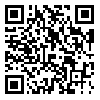Volume 26, Issue 2 (6-2020)
Back to this Issue |
Back to browse issues page
Download citation:
BibTeX | RIS | EndNote | Medlars | ProCite | Reference Manager | RefWorks
Send citation to:



BibTeX | RIS | EndNote | Medlars | ProCite | Reference Manager | RefWorks
Send citation to:
Babaei N, Rassouli M, Shirinabadi Farahani A, Manoochehri H, Beykmirza R, Varzeshnejad M. Compliance and frequency of nursing diagnoses registered in pediatric oncology wards with Nanda nursing diagnosis. Journal of Hayat 2020; 26 (2) :178-191
URL: http://hayat.tums.ac.ir/article-1-3526-en.html
URL: http://hayat.tums.ac.ir/article-1-3526-en.html
Nooshin Babaei1 

 , Maryam Rassouli1
, Maryam Rassouli1 

 , Azam Shirinabadi Farahani1
, Azam Shirinabadi Farahani1 

 , Houman Manoochehri2
, Houman Manoochehri2 

 , Raziyeh Beykmirza3
, Raziyeh Beykmirza3 

 , Maryam Varzeshnejad *
, Maryam Varzeshnejad * 

 4
4


 , Maryam Rassouli1
, Maryam Rassouli1 

 , Azam Shirinabadi Farahani1
, Azam Shirinabadi Farahani1 

 , Houman Manoochehri2
, Houman Manoochehri2 

 , Raziyeh Beykmirza3
, Raziyeh Beykmirza3 

 , Maryam Varzeshnejad *
, Maryam Varzeshnejad * 

 4
4
1- Dept. of Pediatric Nursing, School of Nursing and Midwifery, Shahid Beheshti University of Medical Sciences, Tehran, Iran
2- Dept. of Basic Sciences, School of Nursing and Midwifery, Shahid Beheshti University of Medical Sciences, Tehran, Iran
3- Nursing and Midwifery Care Research Center, School of Nursing and Midwifery, Tehran University of Medical Sciences, Tehran, Iran
4- Dept. of Pediatric Nursing, School of Nursing and Midwifery, Shahid Beheshti University of Medical Sciences, Tehran, Iran ,m_varzeshnrjad@yahoo.com
2- Dept. of Basic Sciences, School of Nursing and Midwifery, Shahid Beheshti University of Medical Sciences, Tehran, Iran
3- Nursing and Midwifery Care Research Center, School of Nursing and Midwifery, Tehran University of Medical Sciences, Tehran, Iran
4- Dept. of Pediatric Nursing, School of Nursing and Midwifery, Shahid Beheshti University of Medical Sciences, Tehran, Iran ,
Abstract: (2859 Views)
Background & Aim: Proper recording of the nursing report indicates the nurse’s optimal clinical performance and compliance with the standards. Nanda Nursing Diagnosis is one of the most important and widely used international standard terms for recording nursing care. The aim of this study was to determine the degree of compliance and frequency of nursing diagnoses registered in the pediatric oncology department with the statements of nursing diagnoses of the Nanda classification system.
Methods & Materials: In this descriptive study, the nursing reports recorded in the files of children hospitalized in the pediatric oncology wards of two hospitals affiliated to Shahid Beheshti University of Medical Sciences in the first quarter of 2016, were reviewed. Sampling was done by the census method for 3 consecutive months. Overall, 86 files and 3701 nursing reports were reviewed. Nurses' documentation was analyzed through the manifest content analysis. The obtained expressions were adapted to the nursing diagnoses of the Nanda classification system and the degree of adaptation and frequency of nursing diagnoses were determined.
Results: The overall compliance between the diagnoses extracted from the nursing reports and the Nanda nursing diagnoses was 14.7%. The most frequent nursing diagnoses were diagnoses related to safety/protection classification with a frequency of 47.95%, followed by diagnoses related to nutrition classification with a frequency of 24.42% and finally a frequency of 12.8% for nursing diagnoses related to comfort classification.
Conclusion: The findings of the present study indicated the low levels of compliance with the Nanda nursing diagnoses and nursing process in the nursing reports. Therefore, practical training is suggested to increase nurses' knowledge and motivation to apply Nanda nursing diagnoses.
Methods & Materials: In this descriptive study, the nursing reports recorded in the files of children hospitalized in the pediatric oncology wards of two hospitals affiliated to Shahid Beheshti University of Medical Sciences in the first quarter of 2016, were reviewed. Sampling was done by the census method for 3 consecutive months. Overall, 86 files and 3701 nursing reports were reviewed. Nurses' documentation was analyzed through the manifest content analysis. The obtained expressions were adapted to the nursing diagnoses of the Nanda classification system and the degree of adaptation and frequency of nursing diagnoses were determined.
Results: The overall compliance between the diagnoses extracted from the nursing reports and the Nanda nursing diagnoses was 14.7%. The most frequent nursing diagnoses were diagnoses related to safety/protection classification with a frequency of 47.95%, followed by diagnoses related to nutrition classification with a frequency of 24.42% and finally a frequency of 12.8% for nursing diagnoses related to comfort classification.
Conclusion: The findings of the present study indicated the low levels of compliance with the Nanda nursing diagnoses and nursing process in the nursing reports. Therefore, practical training is suggested to increase nurses' knowledge and motivation to apply Nanda nursing diagnoses.
Send email to the article author
| Rights and permissions | |
 |
This work is licensed under a Creative Commons Attribution-NonCommercial 4.0 International License. |



